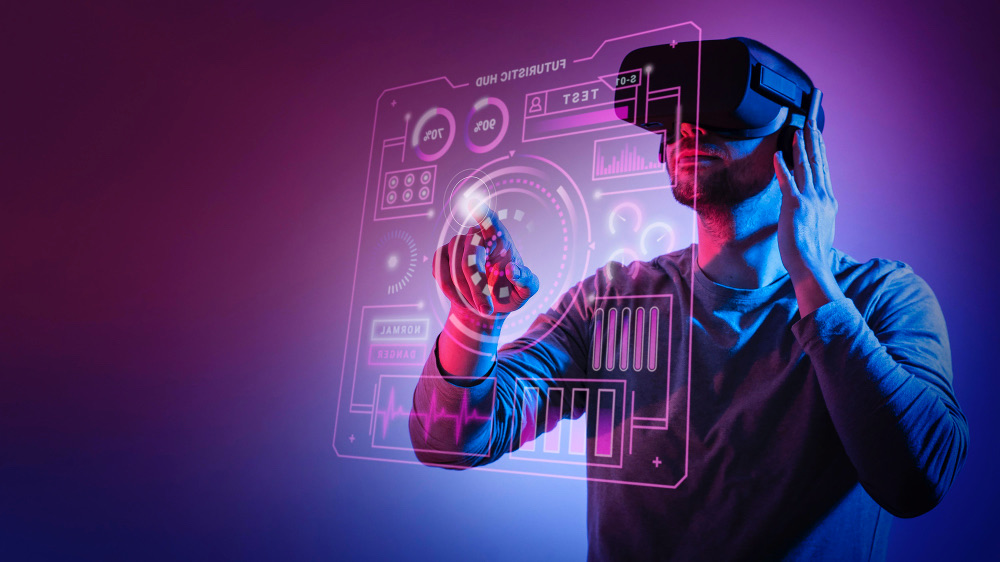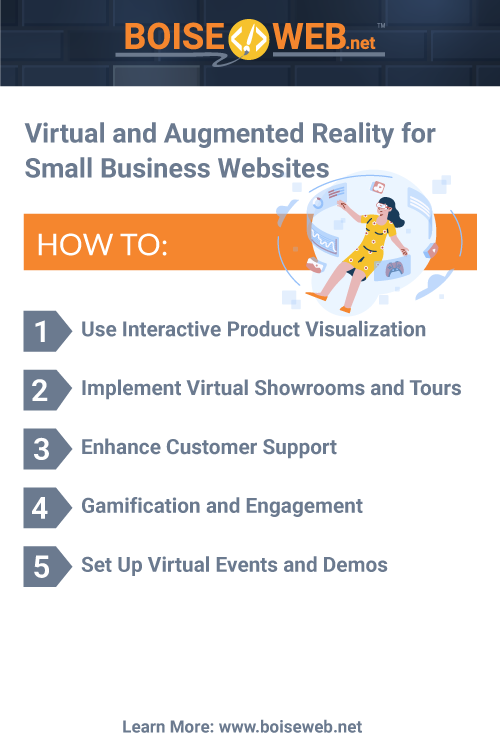In today’s digital age, small businesses are constantly seeking innovative ways to stand out from the competition and engage with their customers. One such groundbreaking technology that has gained momentum in recent years is Virtual and Augmented Reality (VR and AR). These immersive technologies are no longer confined to gaming and entertainment; they have found practical applications in various industries, including web development. In this article, we’ll explore how small businesses can leverage VR and AR to enhance their websites and provide a more engaging and memorable user experience.
- Use Interactive Product Visualization
- Implement Virtual Showrooms and Tours
- Enhance Customer Support
- Gamification and Engagement
- Set Up Virtual Events and Demos
What is Virtual and Augmented Reality?
Before diving into the applications of VR and AR for small business websites, let’s briefly understand what these terms mean.
Virtual Reality (VR): VR immerses users in a completely digital environment, usually via a VR headset. It simulates an alternate reality, allowing users to interact with and explore the digital world around them.
Augmented Reality (AR): AR overlays digital elements onto the real world, typically viewed through a smartphone or AR glasses. It enhances the user’s perception of the real world by adding digital information or objects.
Now, let’s explore how small businesses can incorporate these technologies into their websites.
1. Use Interactive Product Visualization
For small businesses that sell physical products, VR and AR can revolutionize the way customers experience their offerings online. By implementing 3D models and AR features on their websites, businesses can allow customers to interact with products virtually. This provides a more comprehensive view of the product’s features, helping customers make informed purchasing decisions.
For example, a furniture store can enable customers to place 3D models of their products in their own living rooms using AR, giving them a sense of how the furniture will fit into their space. This level of interactivity can boost customer confidence and reduce the likelihood of returns.
2. Implement Virtual Showrooms and Tours
If you have a brick-and-mortar store, VR can enable you to create virtual showrooms or tours of your physical location. This can be especially valuable during the COVID-19 pandemic or for customers who are unable to visit your store in person. Potential customers can explore your store virtually, browse products, and even make purchases directly from the virtual environment.
3. Enhance Customer Support
Another practical application of AR for small business websites is in providing enhanced customer support. Businesses can implement AR chatbots or virtual assistants that guide users through the website, answer common questions, and even demonstrate product usage. This creates a personalized and interactive customer support experience that can increase user satisfaction and conversion rates.
4. Gamification and Engagement
Engagement is key to keeping visitors on your website and converting them into customers. VR and AR can inject an element of fun and interactivity into your website. For example, you can create gamified experiences, where users solve puzzles or complete challenges using AR features. These interactive elements can encourage users to spend more time on your website and return for future visits.
5. Set Up Virtual Events and Demos
Small businesses can also use VR and AR to host virtual events, workshops, or product demonstrations. Whether it’s showcasing new products, providing online training sessions, or hosting virtual conferences, these technologies can make remote events more engaging and immersive for participants.
Challenges and Considerations
While the benefits of incorporating VR and AR into small business websites are compelling, there are some challenges to consider:
Cost: Developing VR and AR features can be expensive, especially for small businesses with limited budgets. However, the investment may pay off in increased customer engagement and sales.
User Experience: Ensuring a seamless and user-friendly experience is crucial. Poorly implemented VR and AR can frustrate users and have the opposite effect on your website’s performance.
Accessibility: Not all users have access to VR headsets or AR-compatible devices, so it’s essential to offer alternative ways for users to access your content.
Virtual and Augmented Reality technologies are no longer the exclusive domain of large corporations. Small businesses can harness the power of VR and AR to enhance their websites and provide unique and engaging experiences to their customers. From interactive product visualization to virtual events and gamified experiences, these technologies have the potential to revolutionize the way small businesses connect with their audiences online. While there are challenges to overcome, the benefits of implementing VR and AR on small business websites can lead to increased customer satisfaction, higher conversion rates, and a competitive edge in the digital marketplace.
The author generated this text in part with GPT-3, OpenAI’s large-scale language-generation model. Upon generating draft language, the author reviewed, edited, and revised the language to their own liking and takes ultimate responsibility for the content of this publication.


